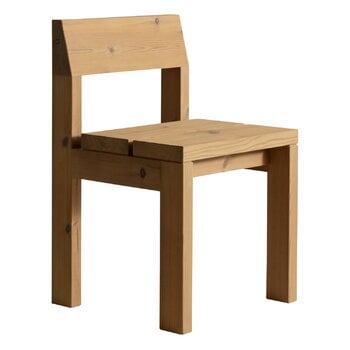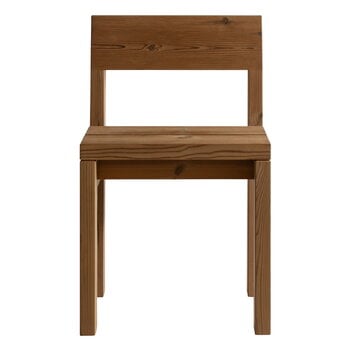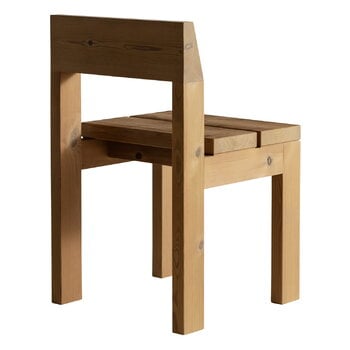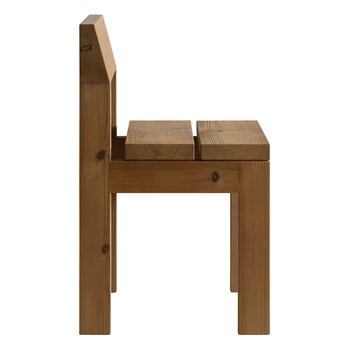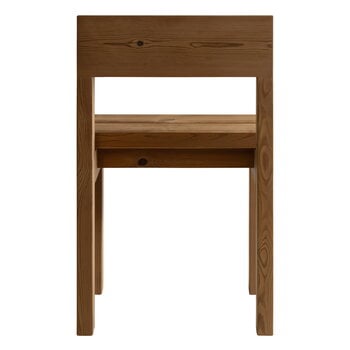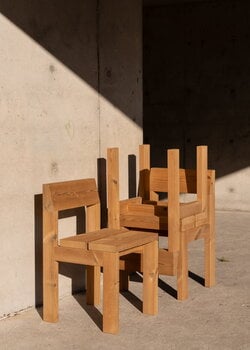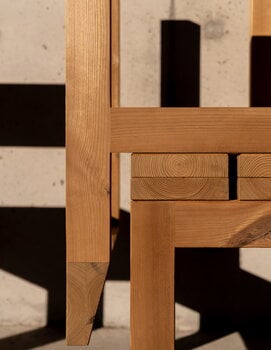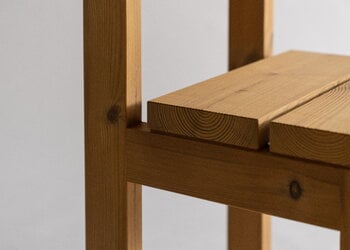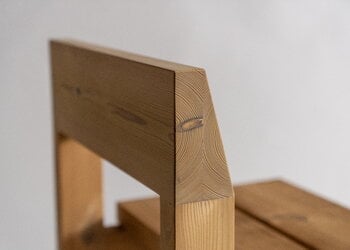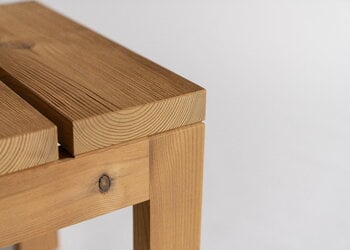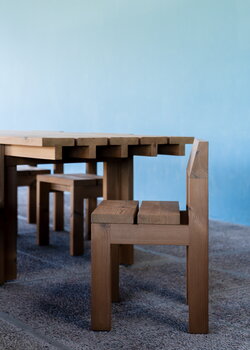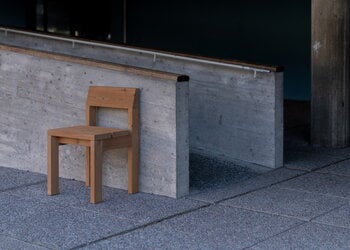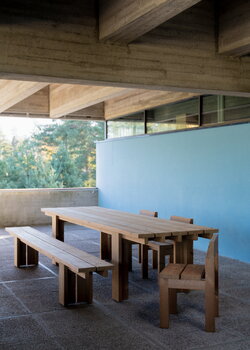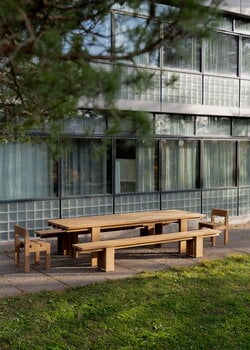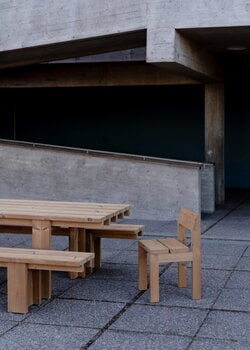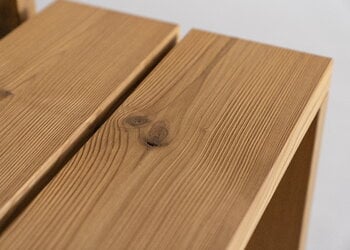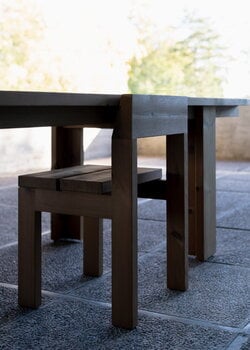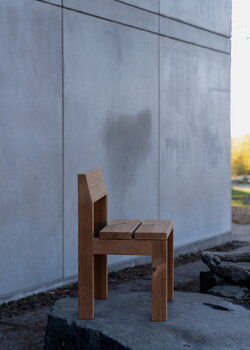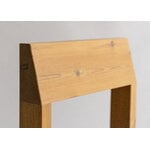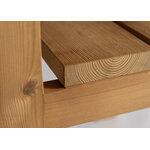Vaarnii’s Osa dining chair is a true eye-catcher – both for its robust yet comfortable appearance and for its distinctive material. The chair is part of the Osa outdoor furniture collection, designed by Henrik Tjaerby, that brings modern wooden elegance straight to your terrace and garden. The Osa outdoor dining chair is made of heat-treated natural Finnish pine that can withstand even the most challenging conditions, all from pouring rain to scorching sunshine.
Over time, the heat-treated pine adopts a silvery-grey patina that adds an intriguing allure to the look of the Osa chair. If you wish to maintain and enhance the original hues of the pine, regularly oil the wooden surface with a suitable furniture oil.

